Find out how scientists and engineers are using the natural world to address difficult human challenges. Investigate how biomimicry is influencing next technologies from materials inspired by shark skin to burdock plant-inspired Velcro.
Table of Contents
- Nature as a Mentor: How Innovation From Nature is Shaping Our Future
- Examples of Biomimetic Innovations
- Sustainability Through Biomimicry
- The Future of Bio-inspired Design
- Extra’s:
Nature as a Mentor: How Innovation From Nature is Shaping Our Future
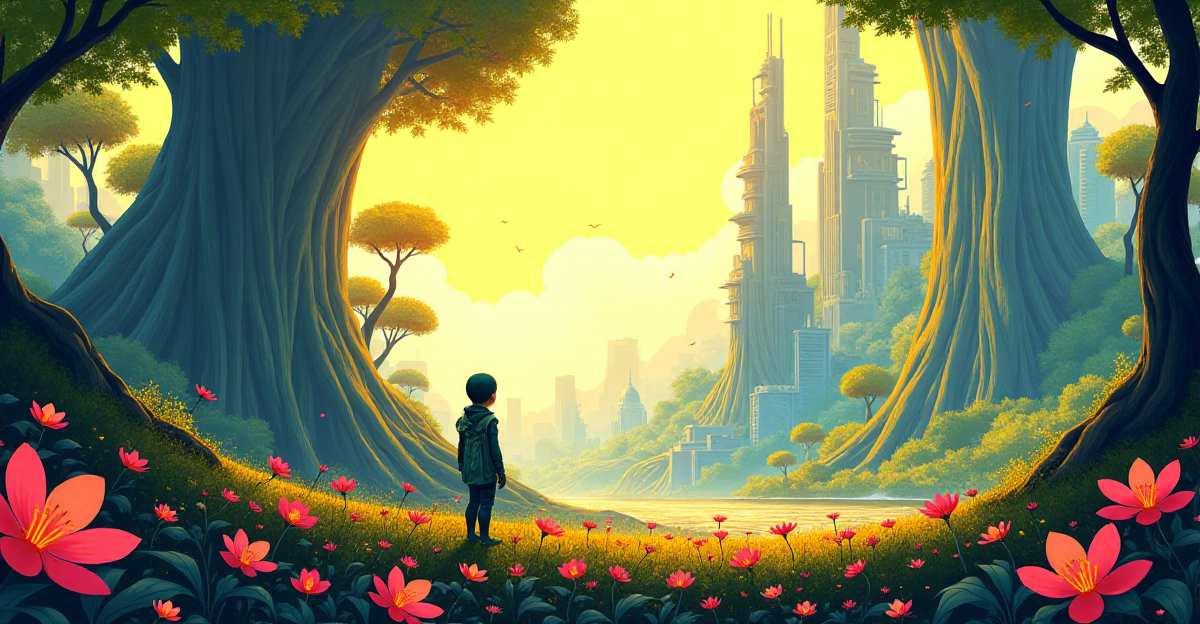
Ever find yourself enthralled by the complex network a spider creates? Its power, grace, and amazing capacity to seize prey are evidence of the creativity found in nature. Constant inventive and adaptable, nature is a master engineer producing astonishingly effective, sustainable solutions. Given their creative innovations to address some of mankind’s most pressing problems, scientists and engineers are naturally seeking nature as a mentor.
Known as biomimicry, this approach entails researching nature’s ideas and using them to provide creative ideas for engineering, technology, and even medicine. This discipline invites us to create solutions that fit the natural world by embracing sustainability and efficiency concepts. Through millions of years of development, nature has refined its ideas; bioinspired solutions have developed by natural selection into amazing adaptations for survival in a range of conditions.
Learning from Nature’s Design Principles
Imagine a time when we construct buildings that spontaneously cool themselves, much as termite mounds. That would be incredible! Imagine also aerodynamic wings of birds reflected in aircraft that glide smoothly through the air. Embracing sustainability and efficiency, innovation from nature is the field that promises us to create solutions in line with the natural world.
Building design’s sustainable design techniques sometimes copy the ventilation and cooling systems seen in termite mounds. These buildings can help to cut our environmental impact and lower energy usage. For instance, a termite mound’s ventilation mechanism is really highly effective. It makes use of a system of tunnels and chambers allowing air to flow freely, so maintaining a constant temperature within the mound. By copying this architecture, we may produce naturally cool summer buildings and warm winter structures, therefore lowering the demand for synthetic heating and cooling equipment.
The Impact of Nature-Inspired Technology
Biomimicry is changing several sectors. In materials science, scientists are producing bio-inspired materials with natural material properties and structural imitation. Shark skin, for instance, with its riblet structure, has motivated the creation of coatings meant to lower drag on ships and aircraft, so increasing their efficiency and fuel economy. As scientists create models of natural processes, biotechnology is transforming medicine. For patients in need of organ transplants, scientists are building synthetic organs out of biodegradable materials that replicate human bodily processes.
Undoubtedly, biomimicry has an impact. Learning from nature helps us to design a future in which technology and environment coexist peacefully, therefore generating more creative answers for the problems we confront. Nature’s answers can help us to produce sustainable and efficient nature-inspired technology. Imagine a time when we might use the power of nature to address our most urgent concerns. This is the great promise of biomimicry, a discipline ready to change our planet for the better.
Examples of Biomimetic Innovations
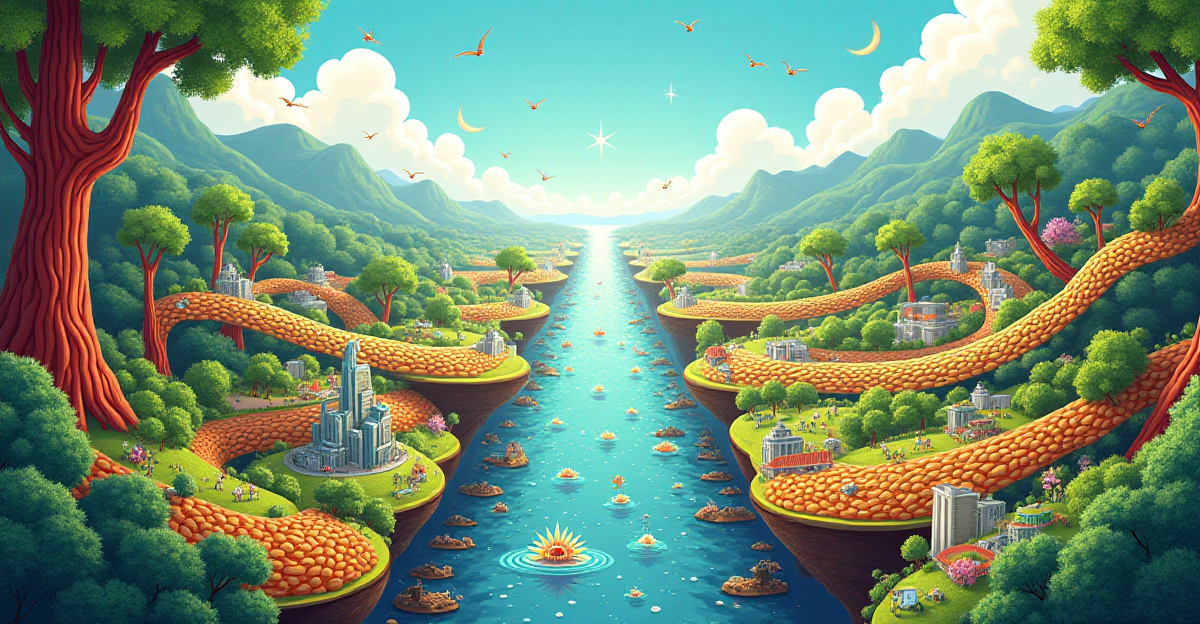
Ever wonder how great ideas are inspired by nature? Fascinating discipline known as biomimicry aims to replicate the incredible solutions seen in nature to address human issues. This method has produced a great spectrum of creative ideas transforming the surroundings. Let’s investigate some amazing instances of biomimicry and their impact.
From Nature’s Masterpieces to Human Innovations
Imagine a society free from Velcro. It surprises you to find that a burdock plant originated this often used fastener. Walking his dog, Swiss engineer George de Mestral discovered burdock seeds adhering to his dog’s fur. These small hooks that let the seeds stick so naturally intrigued him. Under a microscope, he discovered the promise for a ground-breaking new fastening. And so Velcro was born: a basic but clever idea with many uses from spacecraft to clothes.
An additional wonder of nature is shark skin. Sharks have minuscule scales that lessens friction in the water, did you know? This motivated engineers to create bio-inspired coatings—that is, coatings with shark skin’s structure. Ship and airplane efficiency is being raised with these coatings. These coatings can lower drag and thereby increase fuel economy and lower noise level. You might even discover them on the surfaces of high-performance swimwear!
Nature boasts amazing self-cleaning qualities. For example, the lotus leaf boasts a special surface that rejects dirt and water. Inspired by this Lotus effect, researchers have created self-cleaning surfaces applied in many different fields, including building materials, clothing, and even medical tools. Commonly seen in skyscrapers to maintain their glittering cleanliness, this invention has even produced self-cleaning glass.
The Future of Sustainable Design
A great tool for sustainable design, biomimicry is abundantly evident in architecture. Masterfully built, termite mounds offer extraordinary temperature control and ventilation. Learning from these mounds, architects and engineers are creating environmentally friendly constructions. Incorporating natural ventilation systems that replicate the complex tubes and chambers of a termite mound helps buildings keep acceptable temperatures without significantly depending on synthetic heating and cooling, therefore lowering energy usage. In warmer climes, where this passive cooling concept can greatly lower a building’s carbon footprint, it is especially crucial.
Using spider silk is another instance of biomimicry applied in sustainable architecture. Scientists are developing materials with similar unique qualities. Though it’s lightweight and biodegradable, spider silk is quite robust and tough. From bulletproof jackets and medical sutures to biodegradable packaging and lightweight construction materials, it has the potential to transform a great variety of uses. Imagine a time when we might create more sustainable, robust buildings from materials inspired by spider silk.
Combining engineers, biologists, and designers, biomimicry—an interdisciplinary field—allows one to produce creative ideas that are both sustainable and useful. This method is beautiful in that it allows one to learn from nature and implement those ideas to address practical issues. If you would want to investigate this interesting area more, I advise you to look at the few outstanding uses of sustainable innovation and bio-inspired materials. Who knows? You might find motivation to design your own biomimetic solution!
Sustainability Through Biomimicry
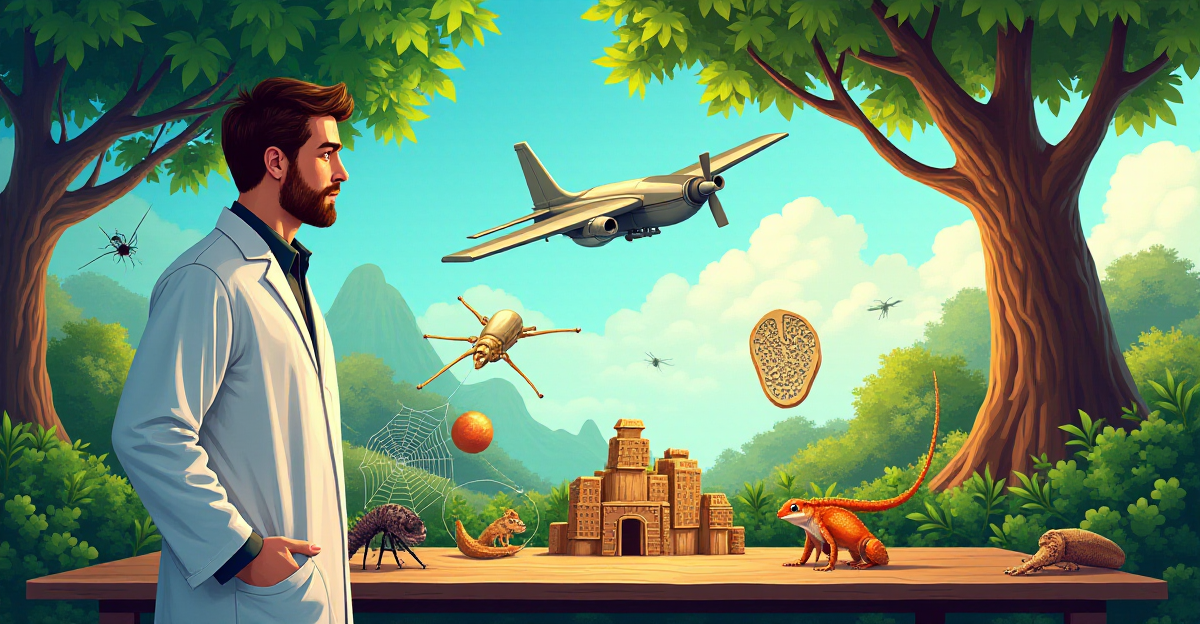
Have you ever stopped to appreciate the complex network of a spider or the simple bird flight? These wonders of nature are not only lovely but also strong models of sustainability, efficiency, and adaptation. This is the core of biomimicry, the discipline where engineers and scientists draw inspiration from the natural world to create creative answers for problems facing our planet.
The Power of Learning from Nature
A fascinating discipline with great promise to build a more sustainable future is biomimicry. It’s about seeking ideas and answers from nature instead of only trying to rule or control it. Imagine a society in which buildings are as self-cooling as termite mounds or in which aircraft copy avian aerodynamic design to reach hitherto unheard-of fuel economy. These are the very practical opportunities that biomimicry presents, not only futuristic dreams.
Biomimicry in Action: Real-World Examples
Not only a theoretical idea, biomimicry is revolutionizing sectors and redefining design and invention ideas. Consider the lotus leaf’s ability to clean itself. To produce self-cleaning surfaces that cut the need for strong chemicals in a range of uses, engineers have modeled this natural occurrence. From building materials and fabrics to medical tools and solar panels, these surfaces are found on everything and greatly lessens our environmental footprint.
The creation of adhesives motivated by the gecko lizard is another remarkable illustration of biomimicry in use. Thanks to the unusual shape of its feet—which are covered in millions of microscopic hairs called setae—this incredible animal can easily scale smooth walls. These setae produce a mild attraction to the surface, but when aggregated over millions of points, they produce a powerful adhesive force enabling the gecko to stick with amazing force. Revolutionizing sectors including manufacturing, construction, and healthcare, this bioinspired solution has produced adhesives that can cling to practically any surface without leaving residue.
Biomimicry offers really limitless possibilities. It encourages us to embrace a whole approach to sustainable design, including nature’s wisdom into all we produce, therefore transcending the box. Deeper exploration of the complex dynamics of the natural world reveals strong ideas of sustainability and efficiency that we may copy to create a better future for next generations.
The Future of Bio-inspired Design
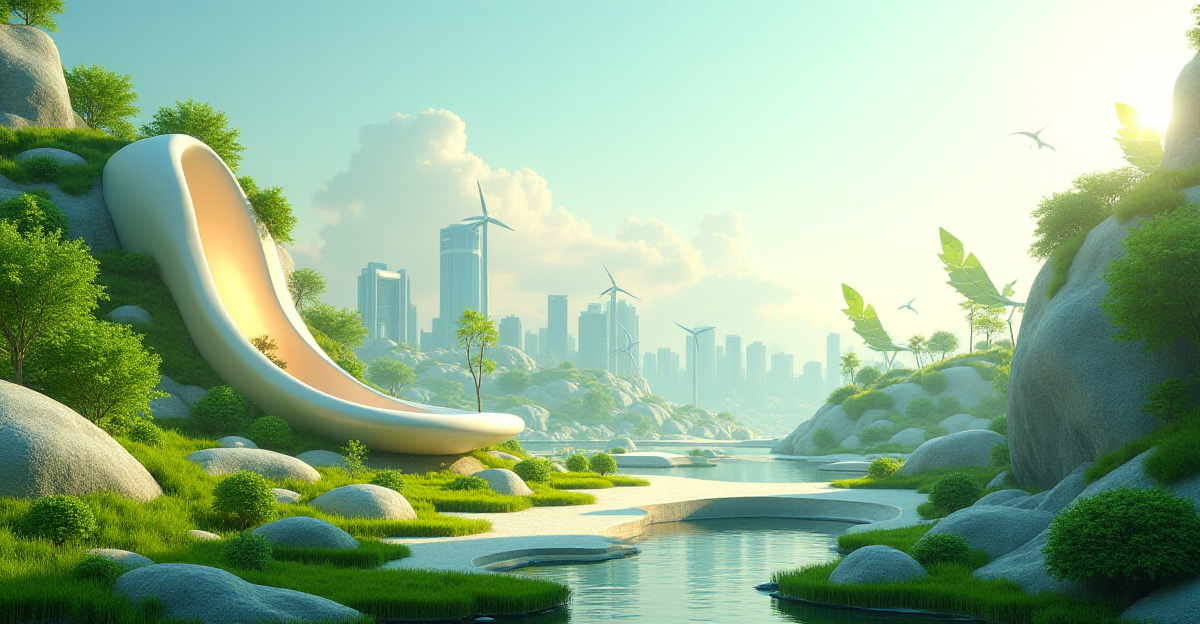
Have you ever marveled at a bird’s simple flight or been enthralled by the intricate construction of a spiderweb? Nature is a great designer, and throughout history many technical developments have been inspired by her clever designs. Biomimicry is the study of how humans could draw on natural solutions to produce creative, sustainable innovations for a better future. It’s about seeking inspiration in the natural world and using its ideas to help to address some of the most urgent problems facing mankind.
Biomimicry is about noticing, copying, and modifying the designs of nature. We may learn a great deal by examining how nature addresses issues including structural integrity, resource management, and energy economy. Consider the aerodynamic construction of a kingfisher’s beak. Inspired by its simplified form, this beak helped to design the Japanese bullet train, therefore lowering wind resistance and increasing fuel economy. This is only one instance of how bio-inspired solutions may produce ground-breaking ideas in many different sectors.
Bio-inspired Design in Action
Biomimicry offers enormous and fascinating possibilities. Already changing several disciplines including architecture, engineering, and health is bio-inspired design. Imagine constructions that, like termite mounds, naturally control their temperature. Alternatively take into account materials utilized to build light-weight and robust constructions that possess the strength and flexibility of spider silk. For people in need of organ transplants, researchers are even building synthetic organs out of “materials that break down naturally.” This is a strong illustration of how directly nature-inspired technology could affect human health.
Sustainable Innovation Through Bio-inspired Design
Biomimicry is about grasping the fundamental ideas and using them to address human challenges, not only about replicating natural designs. Biomimicry is based on sustainable innovation since it motivates us to design answers that coexist peacefully with the surroundings. By reducing our environmental impact and more cleverly exploiting resources, this method supports sustainability.
The creative applications of bio-inspired design nowadays would astound you. Tree resilience motivates us to create increasingly durable and environmentally friendly building materials. The complex network of a spiderweb inspires us to design more effective systems of data transportation. Bio-inspired design presents countless opportunities. We open fresh opportunities for a more creative and sustainable future as we keep discovering the beauties of nature. The next outstanding biomimicry discovery will be what?
Extra’s:
For a deeper dive into the fascinating world of sleep and its impact on our lives, check out our blog post “The Science of Sleep: Understanding Why We Sleep and How It Affects Us“. Understanding the biological processes behind sleep can shed light on the remarkable adaptations nature has developed for rest and rejuvenation, further emphasizing the power of biomimicry. Similarly, if you’re concerned about the pressing issue of plastic pollution, our post “Plastic Pollution Solutions: Innovative Ways to Tackle the Global Crisis” explores cutting-edge solutions inspired by nature’s own methods of breaking down and recycling materials.
For further exploration into the world of biomimicry, we recommend checking out “10 Biomimicry Examples for 2024“, which showcases innovative applications of biomimicry across various fields. To delve deeper into the specific materials and applications of biomimicry, “Biomimicry Materials and Applications | Wiley” offers a comprehensive overview of the scientific research and development in this field. These resources provide valuable insights into the potential of nature-inspired solutions for tackling the challenges of our time.

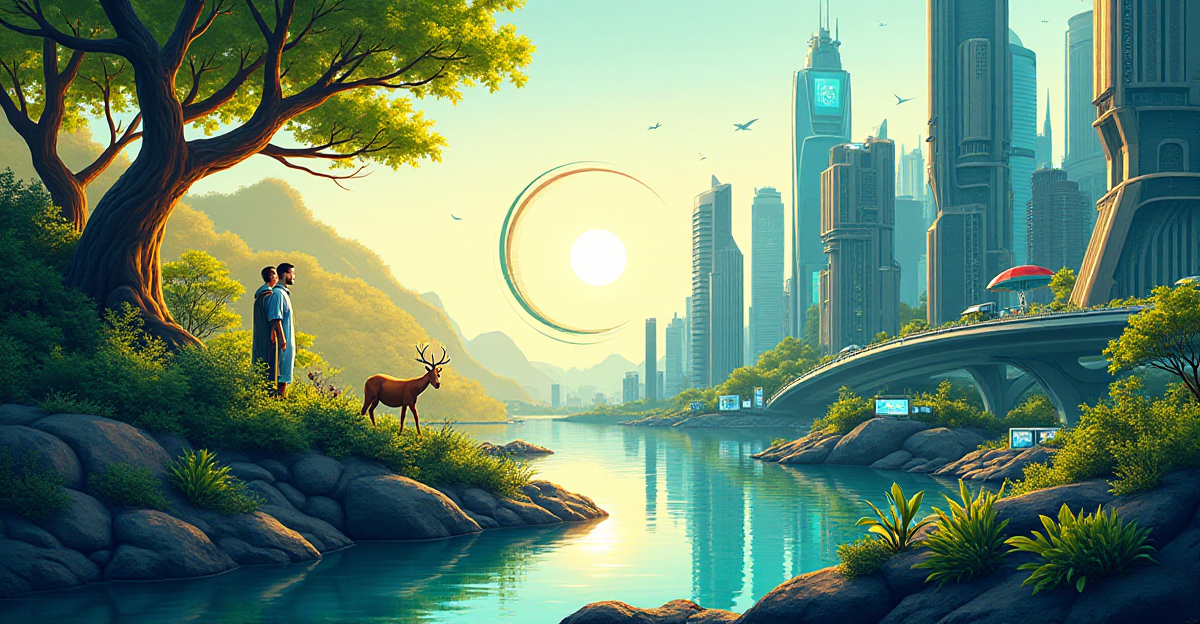










1 thought on “Nature-Inspired Innovations: Biomimicry in Modern Technology”